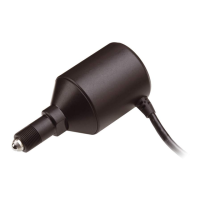Safety Precautions
15
2.2.1 Communication Protocol
The RS-232C interface must be properly configured on both devices
communicating. A correct setting is one that matches all parameters (baud rate,
number of data bits, number of stop bits, parity type and handshake type) for
both devices.
The NewStep controller RS-232C configuration is fixed at 19200 bps, 8 data
bits, no parity, and 1 stop bit.
To prevent buffer overflow when data is transferred to the NewStep controller
input buffer, a CTS/RTS hardware handshake protocol is implemented. The host
terminal can control transmission of characters from the controller by enabling
the Request To Send (RTS) signal once the controller’s Clear To Send (CTS)
signal is ready. Before sending any further characters, the controller will wait for
a CTS from the host.
As soon as its command buffer is full, the controller de-asserts CTS. Then, as
memory becomes available because the controller reads and executes commands
in its buffer, it re-asserts the CTS signal to the host terminal.
2.3 Connection to Non-Newport Controllers
CAUTION
Newport takes no responsibility for improper functioning or damage
of an actuator when it is used with any non-Newport controllers.
CAUTION
Newport guarantees the CE compliance of the NewStep actuators
only if they are used with Newport cables and controllers.

